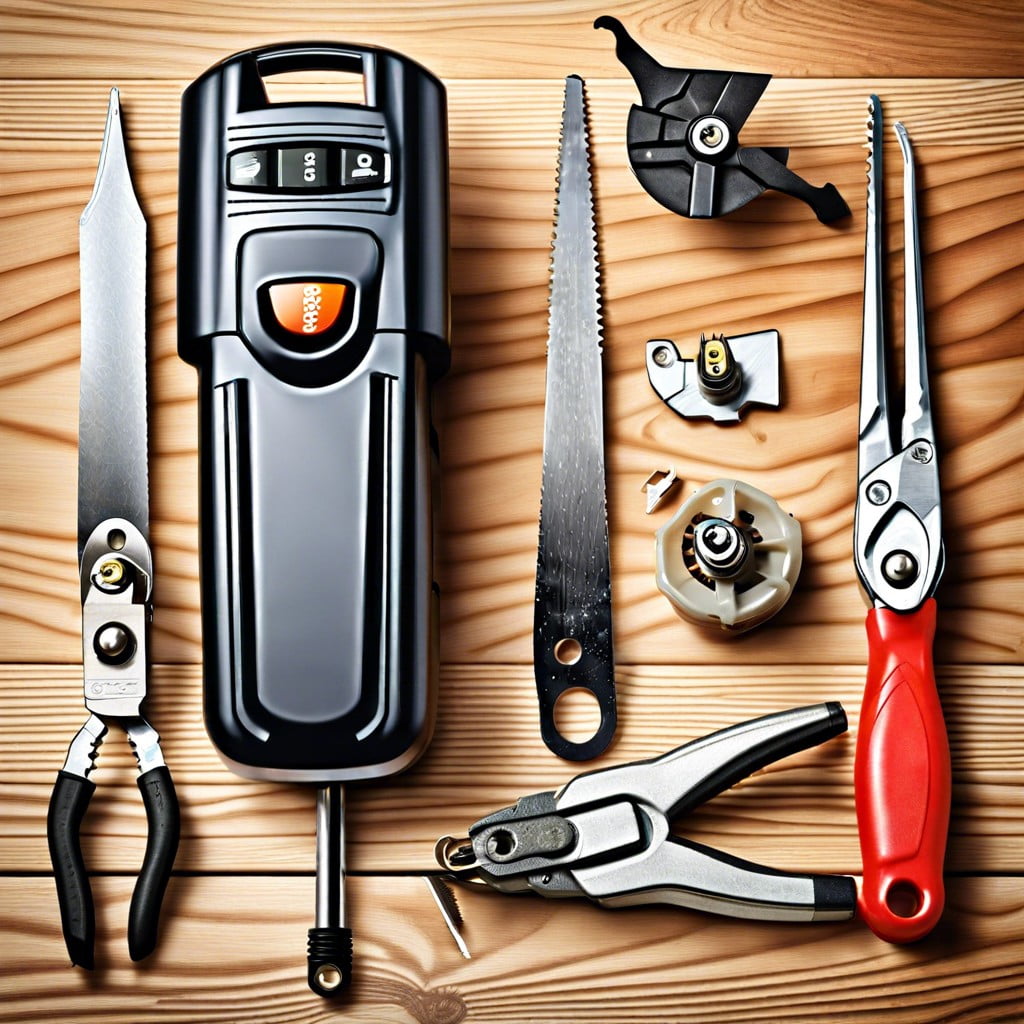Learn how to replace your garage door opener with confidence and precision in this step-by-step guide.
Key takeaways:
- Reasons to replace your garage door opener: increasing noise, unreliable function, and safety concerns with older models.
- Increasing noise during operation can be caused by worn gears or lack of lubrication.
- Unreliable or intermittent function could be due to worn-out components or electrical issues.
- Older models may lack safety features like auto-reverse mechanisms and rolling code technology.
- If your overhead door remote is missing, erase the code from the opener’s memory and reprogram with a new code. Consider upgrading to a model with rolling code technology and adding a keypad for added security.
Reasons Your Garage Door Opener Might Need Replacing

Over time, your peaceful retreat to the car after a long day can be marred by a ruckus if the garage door opener starts sounding like a freight train. This dramatic increase in noise can be a clue that gears are worn or the opener’s moving parts need attention.
Another red flag is when your trusty garage door starts ghosting you, choosing when it feels like responding to the remote or wall switch. This inconsistency isn’t just pesky, it’s a hint your opener’s electronics might be waving a white flag.
Lastly, think back to the era of your garage door opener. If it’s a throwback to times when safety sensors were the stuff of science fiction, consider upgrading. Those old models lack modern safety features that prevent the door from becoming a hazard by auto-reversing if something—or someone—is in the way.
Increasing Noise During Operation
A sudden ruckus or a gradual crescendo of rattles and rumbles from your garage door opener can set off alarm bells in your head. It’s not just about noise pollution in your peaceful abode; it’s often a herald of underlying issues. The clamor might stem from worn gears or perhaps a chain drive in desperate need of lubrication. Metal components can succumb to wear and tear, and these internal battles often manifest as a cacophony of protest every time the door trundles open or shut. Before reaching for the earplugs, check if the mounting brackets are as tight as a drum. A tad of tightening might just silence the boisterous beast. On the flip side, if the noise pairs with erratic opening movements, it could be time to bid farewell to your faithful opener. Keep in mind, garage doors and peace of mind should glide together smoothly.
Unreliable or Intermittent Function
Frustration mounts quickly when your garage door opener has a mind of its own, stopping mid-lift or not responding at all. If this sounds familiar, it’s likely you’re dealing with worn-out components or electrical issues. First, check the batteries in your remote; it’s a simple fix but often overlooked. Next, examine the opener’s motor – over time, gears can wear down, requiring professional attention.
Environmental factors, such as extreme temperatures, can also affect performance. Circuit boards expand and contract with the weather, leading to inconsistent signals. If after basic troubleshooting your system is still temperamental, consider this a sign from above: it might be time to say goodbye to your old opener and hello to a new, reliable one. Remember, consistent operation ensures your daily routine runs smooth as silk.
Safety Concerns With Older Models
Outdated garage door openers can pose several safety risks. For starters, they may lack essential auto-reverse mechanisms that newer models have, which detect objects in the door’s path and halt closure to prevent accidents. Also, older systems might not feature rolling code technology, making your garage more susceptible to break-ins, as tech-savvy burglars can clone fixed codes to gain entry. Furthermore, worn-out mechanical components in aged openers could fail without warning, leading to potential injury or property damage. To mitigate these concerns, routinely inspect your unit for signs of wear and test safety features. If your opener is missing critical safety updates, consider an upgrade to improve both security and peace of mind.
What You Should Do If Your Overhead Door Remote Is Missing
If your overhead door remote has gone missing, act quickly to prevent unauthorized access to your garage. Start by erasing the remote’s code from the opener’s memory. Consult your opener’s manual or manufacturer’s website for specific instructions on code erasing and resetting procedures. Once you remove the old codes, all existing remotes will be deactivated.
Next, reprogram your opener with a new code. If you have a spare remote, you’ll need to sync it with the new code. For added security, upgrade to a model with rolling code technology. Rolling codes generate a new code each time the remote is used, which significantly enhances security.
Finally, consider investing in a keypad as an alternative entry method. Keypads can be programmed with a secure personal identification number, offering a convenient backup if remotes are lost or misplaced again. Remember, maintaining the security of your garage door opener is paramount for the safety of your home.